The WRMarketplace is created exclusively for AALU members by experts at Greenberg Traurig and the AALU staff, led by Jonathan M. Forster, Steven B. Lapidus, Martin Kalb, Richard A. Sirus, and Rebecca S. Manicone. WR Marketplace #18-05 was written by Shareholders Marvin Kirsner and Rick Melnick.
The AALU WR Newswire and WR Marketplace are published by the AALU as part of the Essential Wisdom Series, the trusted source of actionable technical and marketplace knowledge for AALU members—the nation’s most advanced life insurance professionals.
Thursday, 1 February 2018 WRM#18-05
TOPIC: Decoding Tax Reform: Pass-Through Entities Part 2 – Considerations in Converting to a C Corporation.
MARKET TREND: Changes in the tax provisions applicable to businesses, including a significant reduction in the corporate rate, place a premium on practical tax guidance that can help business owners select the right type of business entity for their operations.
SYNOPSIS: As discussed in Part 1 of this WRMarketplace, the recent tax reform legislation reduced the effective tax rate for pass-through business owners by providing these owners with up to a 20% income tax deduction based on the owner’s share of the business’s “qualified business income.” That deduction effectively results in a 28% marginal rate on such income for a typical, successful business owner, and a 29.6% marginal rate for those in the top tax bracket. “C” corporations, however, now receive the benefit of a flat 21% tax rate on their income, which may cause pass-through business owners to consider conversions to C corporation status. These owners should proceed with caution, however, as there are many more tax and practical factors that may impact the conversion decision, apart from a simple comparison of applicable tax rates.
TAKE-AWAYS
Even if a pass-through business owner cannot take advantage of the full 20% deduction available for the qualified business income from that entity, there are several reasons why converting to a C corporation solely to benefit from the reduced 21% tax rate may ultimately be detrimental tax-wise, including: (1) the “double-level” taxation applicable to C corporations and their shareholders, (2) the tax treatment of a business sale structured as an asset sale, (3) the potential tax and other costs associated with the conversion, (4) the additional taxes imposed on accumulated corporate earnings, and (5) the tax treatment of in-kind distributions. A careful tax and financial analysis is required to evaluate the potential consequences of such a conversion, taking into consideration the future goals of the owners and the potential for subsequent changes in the tax code.
One of the main goals of the Tax Cuts and Jobs Act (the “Act”) was to reduce taxes on business income. As discussed in Part 1 of this WRMarketplace, the Act accomplishes this goal for owners of businesses taxed as pass-through entities (i.e., sole proprietorships, partnerships, multiple-member LLCs taxed as partnerships, or subchapter S corporations) by enacting Code §199A, which provides owners of such entities with up to a 20% income tax deduction based on the owner’s share of the business’s “qualified business income” (“QBI”). That new deduction effectively results in a 28% marginal rate on the QBI of a typical, successful business owner, and a 29.6% marginal rate for those in the top tax bracket.
For businesses operating through “C” corporations (i.e., corporations that are not subchapter S corporations), however, H.R.1 achieved its tax reduction goal by lowering the tax rate applicable to such corporations from a maximum rate of 35% to a flat rate of 21%. As this 21% corporate rate is less than the top effective tax rate on QBI from a pass-through business and there are numerous requirements and restrictions that will limit the QBI deduction in many cases, some pass-through business owners might be considering a conversion to a C corporation to take advantage of the lower corporate rate. Such a step, however, should only be taken after very careful consideration of numerous potential tax and practical costs, as discussed below.
DOUBLE LEVEL OF TAX
Two layers of federal tax apply for a C corporation: (1) the corporation pays federal tax on its taxable income at a flat 21% rate and (2) the shareholder pays tax on qualified dividends from the C corporation at a top federal tax rate of 23.8% (based on the top 20% tax rate applicable to qualified dividends plus a 3.8% tax on net investment income). Depending on state law, state taxes also may apply in both cases.
Example: M Corporation has $1 million in taxable income and pays $210,000 in federal income tax (no state income tax applies), leaving $790,000 after taxes. M Corporation pays the entire $790,000 as a qualified dividend to its shareholders, who are all in the top tax bracket. The shareholders will pay a total of $188,020 in federal income tax ($790,000 of total qualified dividends x 23.8% federal tax rate). The total aggregate federal taxes paid at the corporate and shareholder level would be $398,020, an effective tax rate of 39.8%.
However, if the business remained a pass-through entity, with all its income eligible for the 20% deduction, the maximum overall federal tax obligation would be $296,000. Even if none of the income is eligible for the 199A deduction (because, for example, it is a specified service trade or business), the top federal tax rate would be $370,000 ($1 million income x 37% top tax rate), still $28,020 less than the aggregate double tax on the C corporation and its shareholders.
As a general rule, the conversion to C corporation status is only cost-effective if the business plans on reinvesting the funds in the business rather than distributing them to its shareholders or investing the earnings in stocks and bonds.
SALE OF ASSETS
The difference in overall tax rates is even greater when selling a business, if the transaction is structured as an asset sale, rather than as the sale of the stock of the corporation, because the owner of a pass-through entity may be subject to a lower tax rate on the sale of assets that are eligible for long-term capital gain treatment (a maximum federal income tax rate of 23.8% (20% top long-term capital gain rate plus a 3.8% tax on net investment income)).
Example: X Co., a C corporation, sells all its assets, in which it has a $0 basis, to a buyer for $5 million. X Co. would incur a federal tax of $1,050,000 ($5 million x 21%). When X Co. distributes the $3,950,000 in after-tax proceeds as a qualified dividend to its shareholder, the 23.8% tax on that dividend would be $940,000, for a total combined tax payment of $1,990,000 (at the same total effective 39.8% tax rate as in the example above). If X Co. is structured as a pass-through entity, however, the owner pays a single level of tax of $1,190,000, based on application of favorable long-term capital gain rate ($5 million x 23.8%) — $800,000 less than the total tax payments due on an asset sale of a C corporation.
The lesson here is that, even if there might not be a significant difference in the tax burden between a C corporation and a pass-through entity with regard to the operating profits of the business (where the owners of the pass-through business will pay tax at a rate of up to 37%), there could be a material tax benefit to an owner of a pass-through business who is eligible for long-term capital gain treatment on the sale of the business.
If a business owner could structure the sale of his or her C corporation as a sale of shares of the company rather than as a sale of its assets, that owner also would be eligible for the 23.8% federal tax rate on gain from that sale (and possibly for the exclusion of 50%-100% of the gain if the stock had been held for more than five years and otherwise meets the requirements for “qualified business stock” under Internal Revenue Code §1202). Typically, however, purchasers of a business insist on structuring the acquisition as an asset sale for both tax and liability purposes. Further, for asset sales until 2022, the buyer can obtain an immediate write-off for “FF&E” – i.e., movable furniture, fixtures, or other equipment with no permanent connection to the structure of a building or utilities (although the seller in such a case may demand that a premium be added to the purchase price). A buyer who agrees to purchase the stock of the corporation (instead of its assets), however, typically will demand a discount on the sales price to account for the loss of the tax benefits associated with an asset sale and for taking on the added risk of unknown liabilities.
ACCUMULATED EARNINGS
C corporations that accumulate, rather than distribute, their earnings, so that the tax on dividends is not immediately payable, face additional challenges. If a closely-held C corporation accumulates excess earnings, the IRS might seek to assert an excess earnings tax. Also, a potential personal holding company tax might apply if the investment income on the accumulated earnings begins to exceed the company’s active business earnings.
CONVERSION COSTS
There also is a potential tax cost to converting to a C corporation. If the amount of the business’s debt is greater than the adjusted basis of its assets, the conversion to a C corporation will trigger a tax on the difference. For example, assume that a business has $1 million in debt, and the adjusted basis of its assets after depreciation and amortization is $200,000. The conversion to a C corporation will trigger $800,000 in taxable gain that would pass-through to the business owners, who would be responsible for the tax (state tax considerations also may apply).
IN-KIND DISTRIBUTIONS
A C corporation’s distributions of assets to its shareholders trigger (a) tax to the corporation on the difference between the fair market value of the assets and the corporation’s basis and (b) potential dividend income to the shareholders.
For example, a corporation wishes to distribute a plane to its shareholder worth $1 million, which has been depreciated down to $0. The distribution would trigger $1 million of income to the corporation (resulting in $210,000 in federal income tax). Further, if the corporation has accumulated earnings, the shareholders would be subject to income tax as if the corporation paid a cash dividend. This tax problem typically is not present for in-kind distributions of assets to owners of a partnership or LLC taxed as a partnership.
POTENTIAL FOR ADDITIONAL CHANGES
Although the federal corporate income tax rate is now 21%, Congress might increase this rate in the future. For example, changes to the tax code in 1986, which dropped the top individual tax rate to 28%, were soon followed by rate increases. A similar situation might arise here. An attempt to convert a C corporation back to a pass-through entity to respond to such changes, however, would trigger a tax at both the corporate and shareholder level, because the conversion would be treated as a distribution of all corporate assets to the shareholders, followed by contribution of the assets to the pass-through entity. This deemed in-kind distribution would trigger taxes as discussed immediately above.
TAKE-AWAYS
Even if a pass-through business owner cannot take advantage of the full 20% deduction available for the qualified business income from that entity, there are several reasons why converting to a C corporation solely to benefit from the reduced 21% tax rate may ultimately be detrimental tax-wise, including: (1) the “double-level” taxation applicable to C corporations and their shareholders, (2) the tax treatment of a business sale structured as an asset sale, (3) the potential tax and other costs associated with the conversion, (4) the additional taxes imposed on accumulated corporate earnings, and (5) the tax treatment of in-kind distributions. A careful tax and financial analysis is required to evaluate the potential consequences of such a conversion, taking into consideration the future goals of the owners and the potential for subsequent changes in the tax code.
DISCLAIMER
This information is intended solely for information and education and is not intended for use as legal or tax advice. Reference herein to any specific tax or other planning strategy, process, product or service does not constitute promotion, endorsement or recommendation by AALU. Persons should consult with their own legal or tax advisors for specific legal or tax advice.






